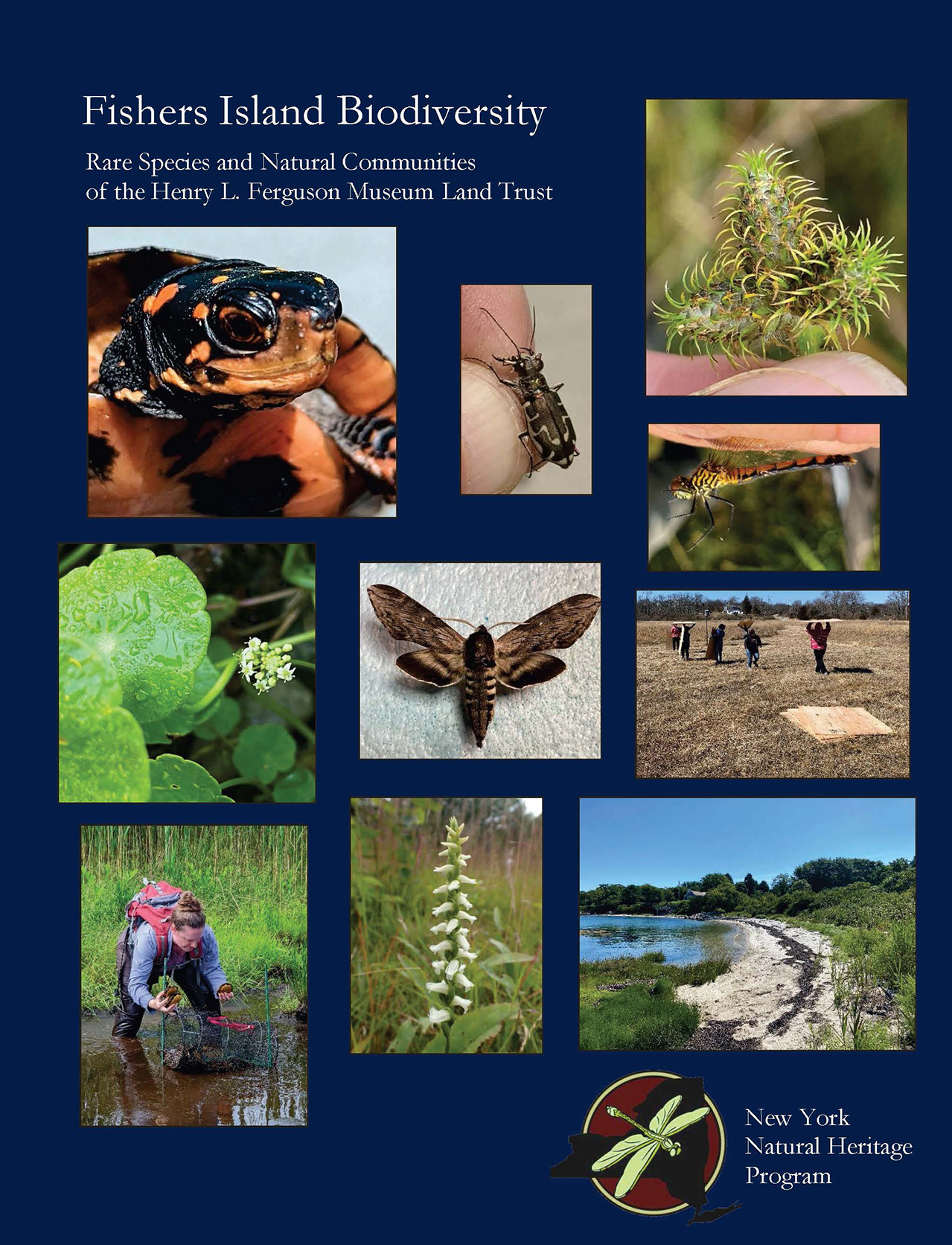New York Natural Heritage Program
Biodiversity Study of Land Trust Properties
For the last two years, a team of scientists from the New York Natural Heritage Program (NYNHP) has been conducting an inventory of the Museum’s Land Trust properties. Ecologists, zoologists, and botanists have used a variety of survey methodologies to study the Island’s natural community types, rare plants, and rare animals. Their extensive work has culminated in a detailed report, which the lead scientists will present to the community on July 30 at the Museum. Here is a preview of their work and findings.
The NYNHP ecologists conducted a wall-to-wall assessment of the community types found on Land Trust properties and adjacent areas and classified 64 ecological communities. These communities include a wide variety of habitat types, from maritime and coastal oak hickory forests to red maple black gum swamps and maritime rocky beaches. Of the 64 ecological communities identified, nine are of state-wide significance and five are newly documented. Significant communities include the eelgrass meadows, coastal oak hickory forest, and shrub swamps. The NYNHP report noted that the grasses that comprise the 35-acre Middle Farms grasslands are atypical for a maritime grassland and provide unique and abundant wildlife habitat “worthy of preserving and enhancing.” Our marine rocky intertidal community type is the largest occurrence recorded in the NYNHP database, and the report notes that Fishers Island has the best example in New York State of a maritime rocky beach community.
In terms of rare plants, the botanists considered both historical records and their own sampling. All in all, 65 rare plant taxa have been identified on Fishers Island – 35 of which are known to be extant – the greatest concentration of rare plantsin the entire state of New York. Exciting species found on Fishers Island include Sea-coast Angelica, Green Screwstem, Large-calyxed Goosefoot, and Coastal Fireweed, among others. Additionally, a new population of state-rare coastal manna grass was discovered. The report notes that most of the rare plant species appear in various wetlands, and some of them are threatened by the expanding population of Phragmites, an invasive genus of common reed.

L to R: Matthew D. Schlesinger, Chief Zoologist, Richard M. Ring, Chief Botanist, Gregory J. Edinger, Chief Ecologist
Given the detailed ornithological lists that have been compiled on Fishers Island over the decades, birds were not a formal focus of this study; however, rare birds that the scientists saw in the field were included in the report. The zoologists actively searched for turtles on Land Trust properties, and found three species: the painted turtle, the common snapping turtle, and the spotted turtle. The latter, last recorded alive on Fishers Island in the 1990s, is a species of concern, so it was exciting to discover juvenile spotted turtles on Fishers Island, an indication that we still have a breeding population.
Bumble bees, butterflies, moths, and dragonflies were also sampled. They documented five species of bumble bee, an important pollinator, and the ecologists believe that Fishers Island is an important breeding spot for the eastern migratory population of Monarch butterflies. The Red-banded Hairstreak, another butterfly they observed, appears to be expanding its range northward. The scientists documented two rare dragonfly species: the Seaside Dragonlet and the Rambur’s Forktail. Remarkably, 393 unique taxa of moths were identified in this study, although several expected species were not found. Of the observed species, three were documented in New York for the first time and five for the first time on Long Island. In total, 27 rare moth species were observed.
Overall, this report provides a wealth of information to the Land Trust and the community about the biodiversity and ecology of Fishers Island, including the critical role the Island plays in providing habitat for rare and diverse species.
The primary authors of this report are Matthew D. Schlesinger, Chief Zoologist (pictured at left above), Richard M. Ring, Chief Botanist (pictured at center above), Gregory J. Edinger, Chief Ecologist (pictured at right above), Ashley M. Ballou, Zoologist, Katie G. Hietala-Henschell, Zoologist, Meaghan A. McCormack, Marine Zoologist, John P. Vanek, Zoologist, Erin L. White, Zoologist and Project Coordinator, and Stephen M. Young, Former Chief Botanist. Printed copies of the primary report are scheduled to be available for distribution at the July 30 presentation. Appendices will be distributed as attached pdfs upon request.


